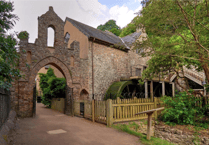To all qualified geologists, there is an axiomatic rule that says “once a weakness, always a weakness”, and this would apply to the crustal fracture which reaches from Dorset and across the Bristol Channel to Swansea.
To us, this is a slighter version of the fault which cuts through San Francisco – the San Andreas Fault – a focus for earthquakes and movements through history.
What we are proud to identify as the Watchet Fault can be seen if you go down the steps to Helwell Bay and walk out at low tide, turn around and take in the west cliff.
To the right of the steps are crumpled dark mudstones (the lias), and to the right are crumpled and tilted red sandstones (the trias).
The Watchet Fault separates the two successions and runs west to the marina.
The fault and broken strata are hidden by the cement of the marina platform, which hides the fault walls from view.
The fracture descends more than 400 feet, and the fault extends across the harbour to West Street and runs up to Daws Castle on the cliff top.
In 2007, when the Lorna Doone development was built, Watchet Fault worries were countered with the astonishing assurance that the fault was “no longer active”.
But once a weakness, always a weakness – movements to the Watchet Fault have produced earthquake movement of up to Seismic 3 and 3.5 locally, 4 off the channel at Ilfracombe and 5 at Swansea.
The Watchet Fault is not dead and continues to present concerns for the development of the East Quay. Engineers who encourage building there would probably be skating on thin ice.
Dr Eric Robinson, Whitehall, Watchet.




Comments
This article has no comments yet. Be the first to leave a comment.